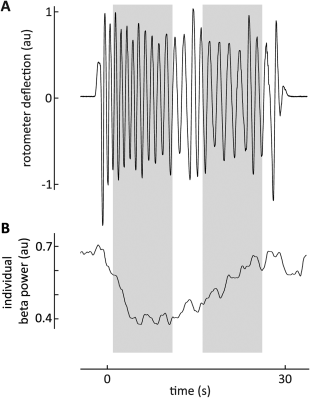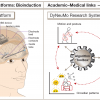Subthalamic beta dynamics mirror Parkinsonian bradykinesia months after neurostimulator implantation.
If brain signals are to be used to control when and how brain stimulation is applied for therapy, then we must be confident that such signals remain consistent and informative over time. Using a special brain pacemaker device that allowed us to record brain signals over long periods, we show that these signals remain informative about the clinical states of people with Parkinson’s for many months.
Exaggerated oscillatory activity in the beta frequency band in the subthalamic nucleus has been suggested to be related to bradykinesia in Parkinson's disease (PD). However, studies seeking correlations between such activity in the local field potential and motor performance have been limited to the immediate postoperative period, which may be confounded by a stun effect that leads to the temporary alleviation of PD deficits.

2017.Mov. Disord., 32(8):1183-1190.
2025. Mov Disord, 40(3):456-467.

